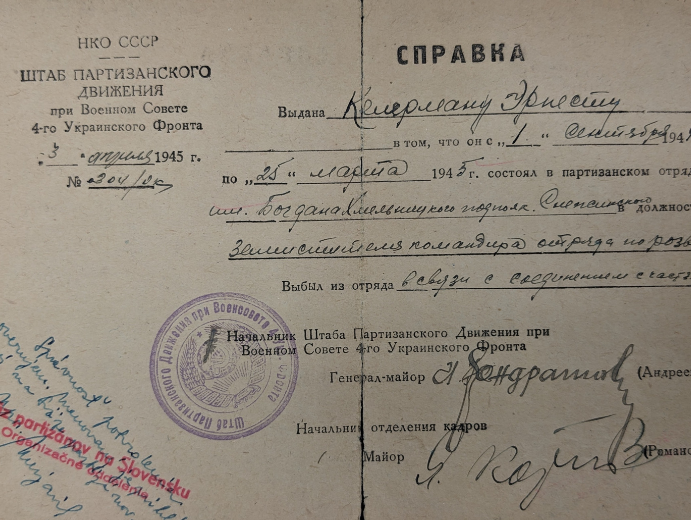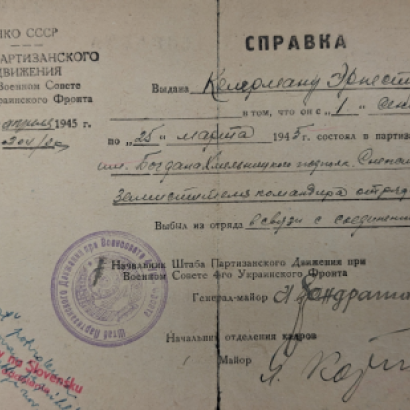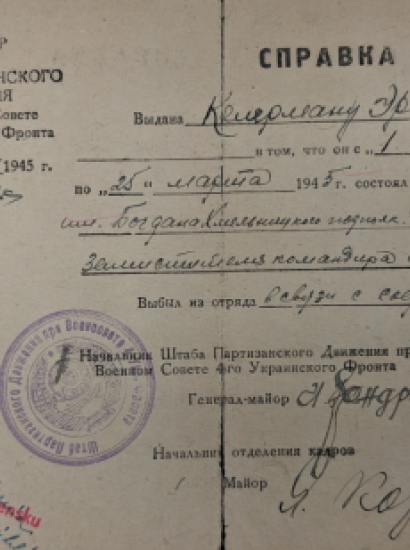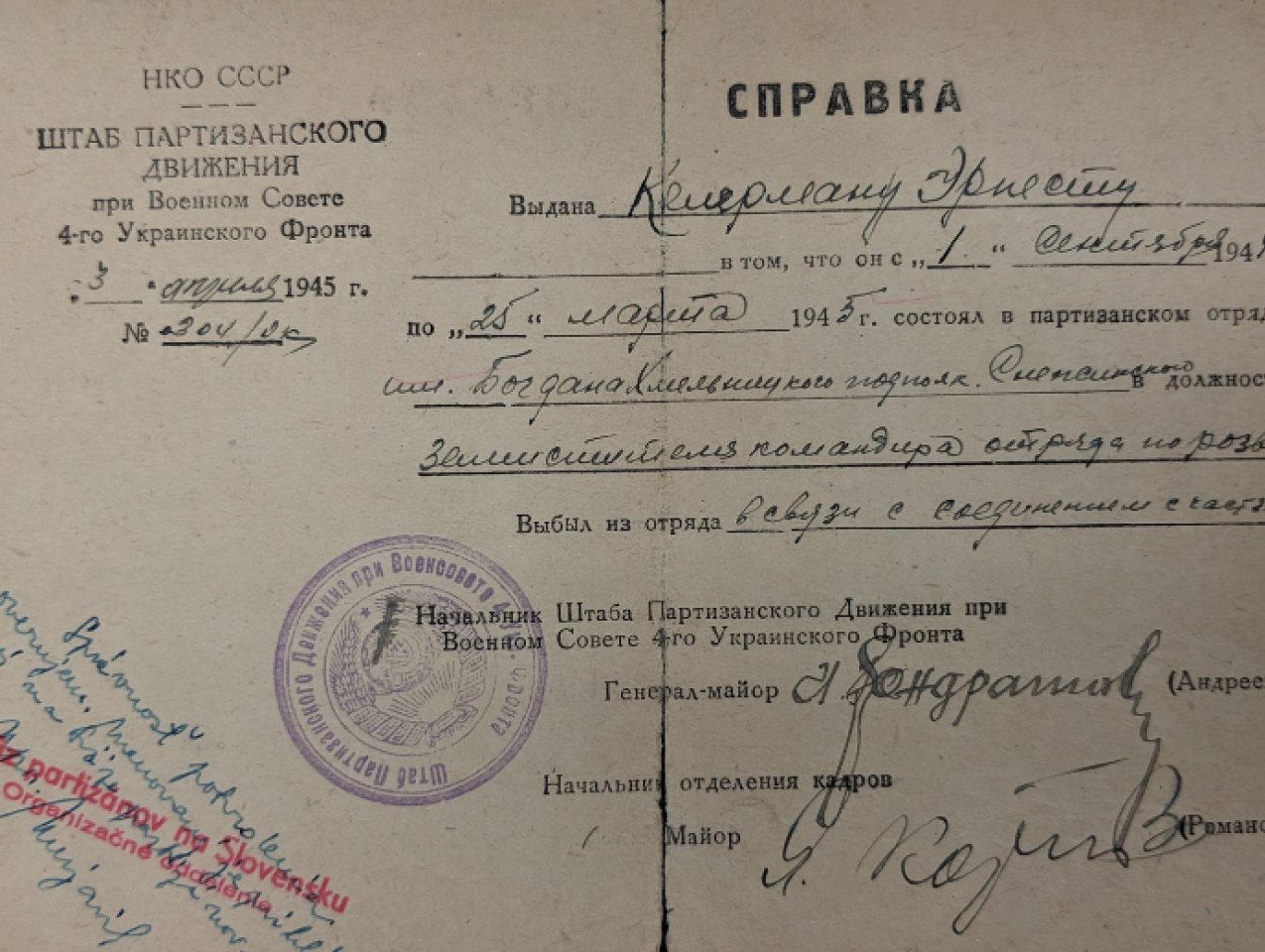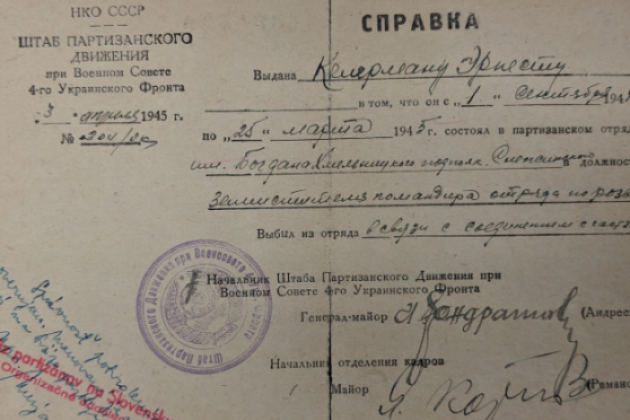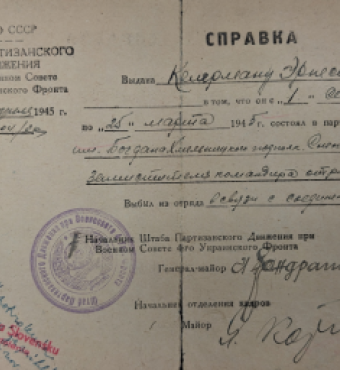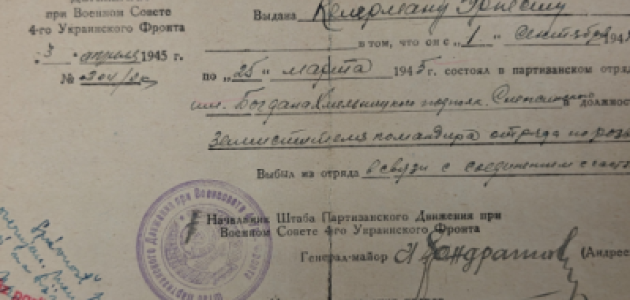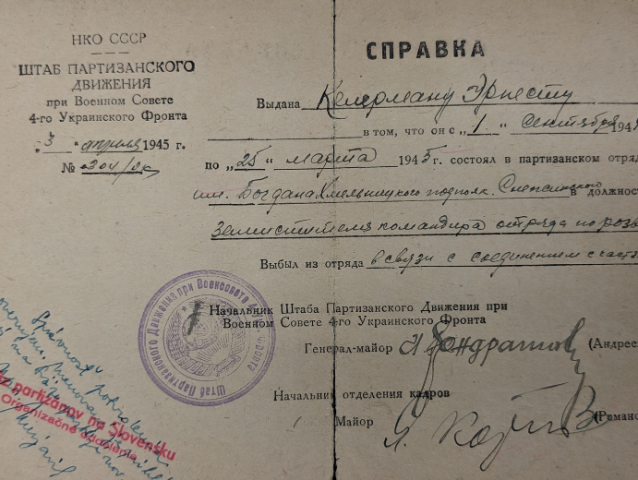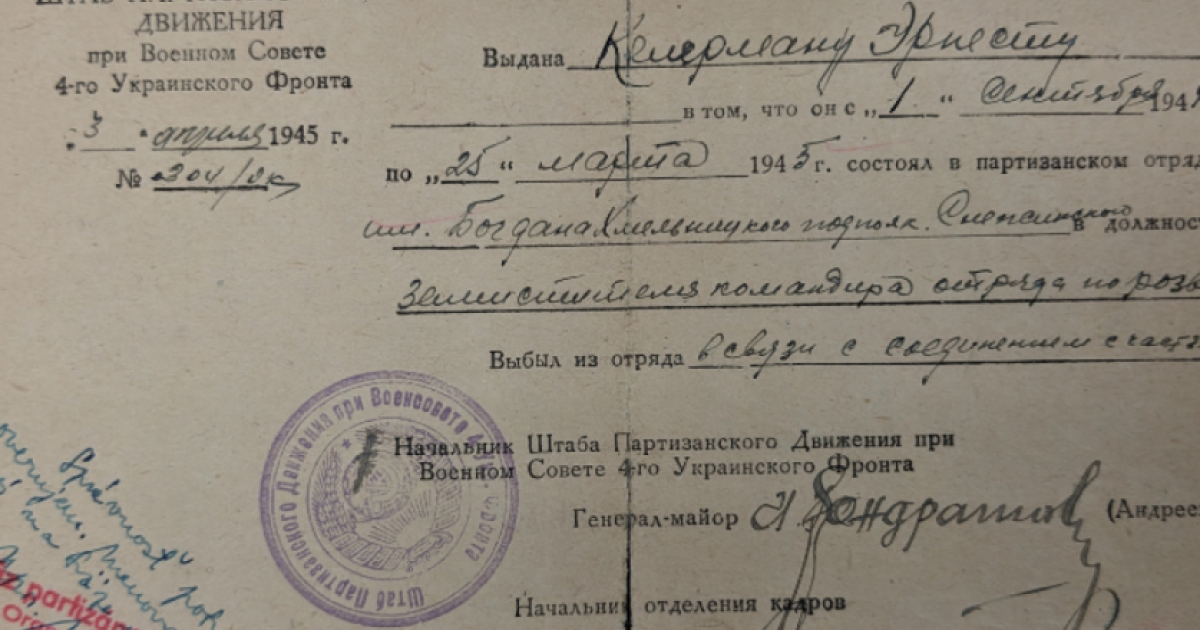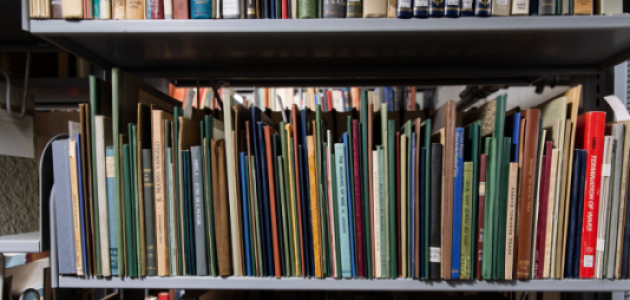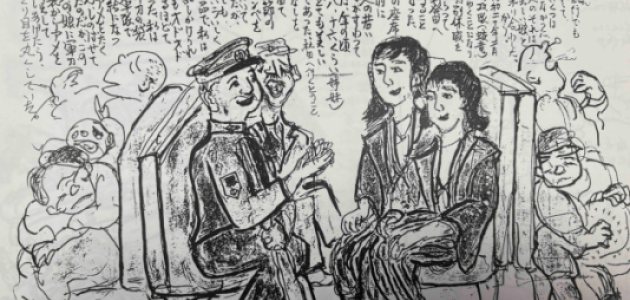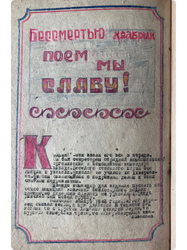
Hoover Institution (Stanford, CA)—The Hoover Institution Library & Archives has acquired two collections documenting partisan and guerrilla activity in Eastern Europe during the final years of World War II. Together, these materials shed new light on how local fighters resisted Axis forces and how their experiences were recorded, remembered, and contested in the historical record.
The first collection preserves the papers of Captain Ernest Kellermann, born in 1893 in Horné Bzince, near Nové Mesto in Slovakia. Little is known of Kellermann’s early life beyond his studies in law at Budapest and his role in the interwar spirits industry, where he helped establish several distilleries in Slovakia. By September 1944, he had joined the Bogdan Khmel’nitskii guerrilla unit under Colonel Slepsinskii, and by March 1945 he was serving in the Soviet Army as it entered Czechoslovakia.
The Kellermann papers—dating almost entirely from late 1944 and early 1945—document the operations of the Bogdan Khmel’nitskii guerrilla force. This collection includes fighter lists, letter books, meeting minutes, orders, passes, certificates, and maps of combat zones. The documents, written primarily in Slovak with some in Russian, show that most members of the unit were local Slovaks, supplemented by a smaller number of Soviet escapees, deserters, and stragglers. These papers provide rare firsthand testimony of partisan activity in Slovakia at the end of the war.
The second acquisition is a handmade, illustrated typescript issued in February 1944 by the Osipovichi Underground Union of Communist Youth of Belarus and featured in our Summer 2025 Newly Catalogued Library Materials. Entitled Uchis’ u nikh bit’ vraga (Learn from Them How to Defeat the Enemy), the volume blends text and illustration to commemorate the exploits of local partisan units. Its twenty-seven pages recount operations that included derailing some fifty trains, destroying fifteen armored vehicles, and carrying out other sabotage efforts against Axis forces. The “Them” in the title refers to fallen partisans, presented as heroic examples to inspire continued resistance.

Beyond its vivid narrative and striking illustrations, the volume is especially valuable for its extensive naming of individuals involved in the partisan struggle. Though the exploits described require careful comparison with German and Soviet records, the work remains an important artifact of how the resistance sought to record and elevate its own history. Intriguingly, the volume is labeled “Part 1,” but no further parts have been located.
Together, these acquisitions broaden the resources available to scholars of World War II, resistance movements, and Eastern European history. They not only capture the tactical realities of guerrilla warfare but also reveal the ways in which partisans sought to document, legitimize, and memorialize their struggle. By preserving such rare materials, the Hoover Institution Library & Archives continues its mission to safeguard and make accessible the records of war, revolution, and peace.




